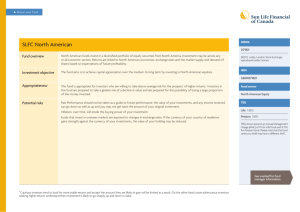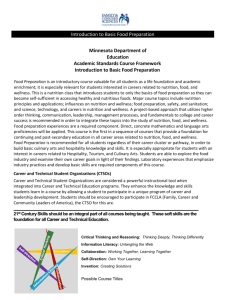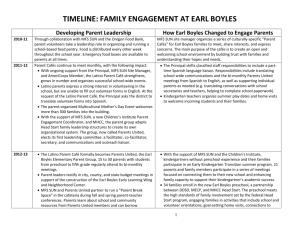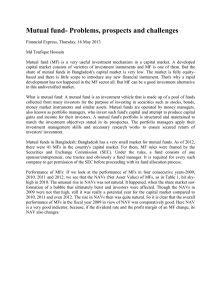MN Food Science
advertisement
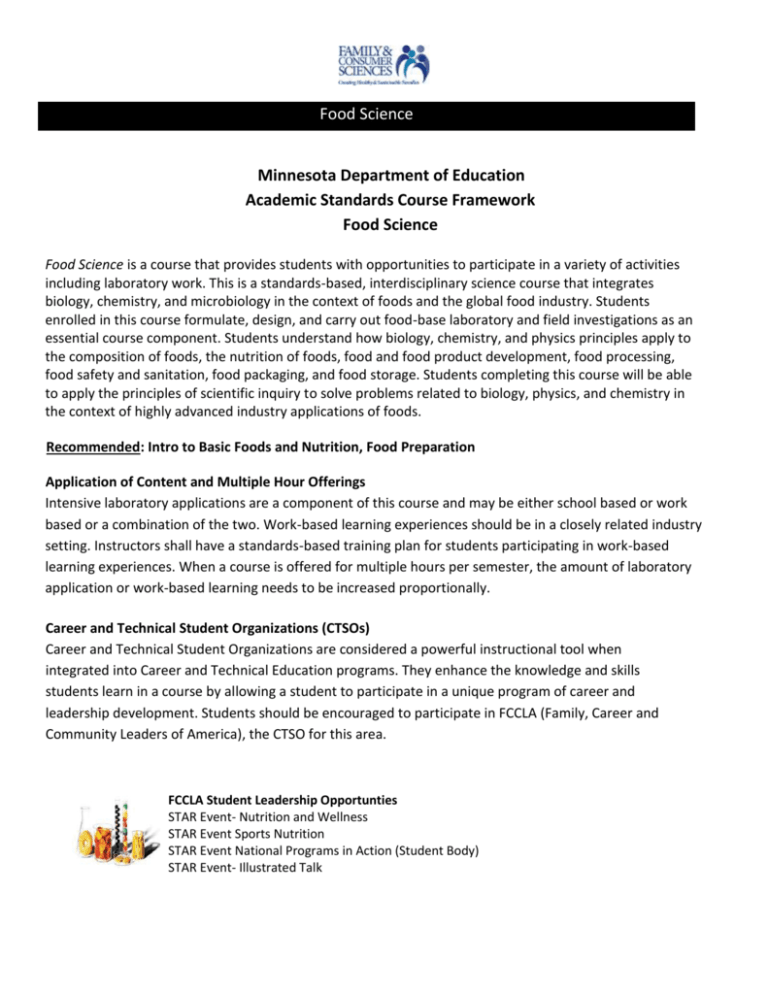
Food Science Minnesota Department of Education Academic Standards Course Framework Food Science Food Science is a course that provides students with opportunities to participate in a variety of activities including laboratory work. This is a standards-based, interdisciplinary science course that integrates biology, chemistry, and microbiology in the context of foods and the global food industry. Students enrolled in this course formulate, design, and carry out food-base laboratory and field investigations as an essential course component. Students understand how biology, chemistry, and physics principles apply to the composition of foods, the nutrition of foods, food and food product development, food processing, food safety and sanitation, food packaging, and food storage. Students completing this course will be able to apply the principles of scientific inquiry to solve problems related to biology, physics, and chemistry in the context of highly advanced industry applications of foods. Recommended: Intro to Basic Foods and Nutrition, Food Preparation Application of Content and Multiple Hour Offerings Intensive laboratory applications are a component of this course and may be either school based or work based or a combination of the two. Work-based learning experiences should be in a closely related industry setting. Instructors shall have a standards-based training plan for students participating in work-based learning experiences. When a course is offered for multiple hours per semester, the amount of laboratory application or work-based learning needs to be increased proportionally. Career and Technical Student Organizations (CTSOs) Career and Technical Student Organizations are considered a powerful instructional tool when integrated into Career and Technical Education programs. They enhance the knowledge and skills students learn in a course by allowing a student to participate in a unique program of career and leadership development. Students should be encouraged to participate in FCCLA (Family, Career and Community Leaders of America), the CTSO for this area. FCCLA Student Leadership Opportunties STAR Event- Nutrition and Wellness STAR Event Sports Nutrition STAR Event National Programs in Action (Student Body) STAR Event- Illustrated Talk Food Science 21st Century Skills should be an integral part of all courses being taught. These soft skills are the foundation for all Career and Technical Education. Critical Thinking and Reasoning: Thinking Deeply, Thinking Differently Information Literacy: Untangling the Web Collaboration: Working Together, Learning Together Self-Direction: Own Your Learning Invention: Creating Solutions Possible Course Titles STEM/STEAM Connections ● Food Product Development ● Food, Health and Nutrition ● Food Processing and Packaging ● Food Safety and Defense ● Food Chemistry ● Food Engineering ● Food Microbiology ● Food Sensory ● Sustainability ● Policy and Regulations Food Science 1. Career Pathways Career Field: Agriculture, Food, and Natural Resources > Career Cluster: >Agriculture, Food, and Natural Resources> Career Pathways: Food Products and Processing Systems Career Field: Health Science Technology>Career Cluster: Health Science>Career Pathways: Biotechnology Research and Development, Diagnostic Services, Support Services, Health Informatics, Therapeutic Services Key FACS=Family and Consumer Sciences MFS=Minnesota Food Science STEM=Science, Technology, Engineering, and Math STEAM=Science, Technology, Engineering, Art, & Math FCCLA=Family, Community, & Career Leaders of America Topic: History of Food Science Minnesota Framework: 1.0 Analyze the development of food science principles and discoveries throughout history. National Standard: 9.1 Analyze career paths within food science, food technology, dietetics, and nutrition industries. STEM/STEAM Standard: National Standard Correlation Minnesota Framework/Standard Benchmarks/Competencies 9.1.1 MFS1.1 Define food science and food technology. MFS1.2 MFS1.3 Summarize how the food science industry has changed over time. Evaluate how previous discoveries have influenced current food science advancements. Food Science Topic: Food Science Principles Minnesota Framework: 2.0 Demonstrate food science principles using mathematical reasoning and chemistry. National Standard: 9.6 Demonstrate food science, dietetics, and nutrition management principles and practices. STEM/STEAM Standard: 9.1.2.1 Engineering is a way of addressing human needs by applying science concepts and mathematical techniques to develop new products, tools, processes and systems. (i.e. candy making-crystallization, yogurt-probiotics, GMO’s-genetically modified foods) National Standard Correlation Minnesota Framework/ Standard Benchmarks/Competencies 9.6.3 MFS 2.1 Summarize measurement and mathematical skills used for recipe and product development. Define the scientific method and apply to food science related experiment. Model a chemical reaction within the production of a food item. MFS 2.2 MFS 2.3 Topic: Food Safety and Sanitation Minnesota Framework: 3.0 Apply risk management procedures to food safety, food testing, and sanitation. National Standard Correlation: 9.2 Apply risk management procedures to food safety, food testing, and sanitation. STEM/STEAM Standard: Science Standard 9.4.4.2 Personal and community health can be affected by the environment, body functions and human behavior. (i.e. wellness is impacted by our food handling techniques when preparing food) National Standard Minnesota Benchmarks/Competencies Correlation Frameworks 9.2.1 MFS 3.1 Identify the factors that contribute to food borne illness. 9.2.2 MFS 3.2 Analyze food service safety and sanitation procedures. 9.2.4 MFS 3.3 Utilize Hazard Analysis Critical Control Point (HACCP) to minimize the risk of food borne illness before, during, and after food production. Food Science Topic: Food Chemistry Minnesota Frameworks: 4.0 Evaluate chemical processes though food production. National Standard: 9.6 Demonstrate food science, dietetics, and nutrition management principles and practices. STEM/STEAM Standard: 9.1.3.1 Natural and designed systems are made up of components that act within a system and interact with other systems. 9.1.1.2 Scientific inquiry uses multiple interrelated processes to investigate and explain the natural world. National Standard Correlation Minnesota Frameworks Benchmarks/Competencies 9.6.2 MFS 4.1 Define food chemistry and how it is applied to the world food supply. 9.6.2 MFS 4.2 Predict various chemical reactions that may occur during food production. 9.6.2 MFS 4.3 Analyze the roles of elements, compounds, and mixtures during food production. 9.6.2 MFS 4.4 Compare and contrast the chemical composition of emulsions, foams, gels, and viscosity as used in food production. Topic: Food Additives National Standard: 9.3 Evaluate nutrition principles, food plans, preparation techniques and specialized dietary plans Minnesota Frameworks: 5.0 Assess the effects the food additives have on our daily lives. STEM/STEAM Standard: 9.1.1.2 Scientific inquiry uses multiple interrelated processes to investigate and explain the natural world. National Minnesota Benchmarks/Competencies Standard Correlation Framework/ Standard 9.3.2 MFS 5.1 Analyze the nutritional data of various food products to identify additives. 9.3.6 MFS 5.2 Critique the selection of foods to promote a healthy lifestyle. 9.3.6 MFS 5.3 Investigate the differences between artificial and natural food flavors. 9.3.6 MFS 5.4 Identify commonly used artificial flavors. 9.5.1 MFS 5.5 Distinguish the various factors that affect food preferences in food selection. Food Science Topic: Sensory Evaluation Minnesota Standard: 6.0 Analyze the effectiveness of sensory evaluations in food productions. National Standard: 9.5 Demonstrate use of current technology in food product development and marketing. STEM/STEAM Standard: 9.1.3.3 Science and engineering operate in the context of society and both influence and are influenced by this context. National Minnesota Benchmarks/Competencies Standard Correlation Frameworks 9.5.6 MFS 6.1 Describe the sensory analysis process in food development. 9.5.7 MFS 6.2 9.5.6 MFS 6.3 Analyze the importance of sensory testing for safety and marketability of food products. Create a sensory test to be conducted in a laboratory setting. Topic: Packaging & Preservation Minnesota Frameworks: 7.0 Evaluate the importance of industry standards within food packaging and preservation. National Standard: 9.5 Demonstrate use of current technology in food product development and marketing. STEM/STEAM Standard: 9.1.1.2 Scientific inquiry uses multiple interrelated processes to investigate and explain the natural world. National Minnesota Benchmarks/Competencies Standard Correlation Frameworks 9.5.1 MFS 7.1 Identify the methods of food preservation. 9.5.1 MFS 7.2 Investigate a method and product to keep food items fresher longer. 9.5.1 MFS 7.3 Describe how irradiation works and how to handle foods that have been irradiated. 9.5.1 MFS 7.4 9.5.1 MFS 7.6 9.5.1 MFS 7.7 9.5.1 MFS 7.8 Explain how to safely freeze foods, the length of time to be frozen, and how to safely thaw foods. Explain how foods can be preserved by vacuum packing and how it changes their shelf life. Describe various drying processes, food nutrient values, and how you package and store dried foods. Apply food preservation knowledge to store and package food safely. Food Science Topic: Food Science Careers, Industry & Manufacturing Minnesota Frameworks: 8.0 Investigate career paths that correlate with food science, production & manufacturing. National Standard: 9.1 Analyze career paths within food science, food technology, dietetics, and nutrition industries. STEM/STEAM Standard: 9.1.2.1 Engineering is a way of addressing human needs by applying science concepts and mathematical techniques to develop new products, tools, processes and systems. National Minnesota Benchmarks/Competencies Standard Correlation Frameworks 9.1.1 MFS 8.1 Identify careers in the food science and technology industry. 9.1.1 MFS 8.2 Investigate the roles of functions of careers in the food science industry. 9.1.4 MFS 8.3 9.1.5 MFS 8.4 Analyze the impact that food science industries have on local, state, and national economies. (i.e. General Mills, Hormel, Schwan’s, Jenni-O, Land O’ Lakes, Cargill, Con Agra) Create a portfolio to assist with searching and applying for food science and technology related careers. Source: Food Science By: Colleen Angel and Judy Srsen 50 Web-based Lesson Plans Learning ZoneXpress
